How to Get a Pearl Cockatiel: Breeding Guide for Beginners in 2025
Embark on your breeding journey with our guide to acquiring a Pearl Cockatiel, from selecting a pair to understanding genetics. Enjoy reading!
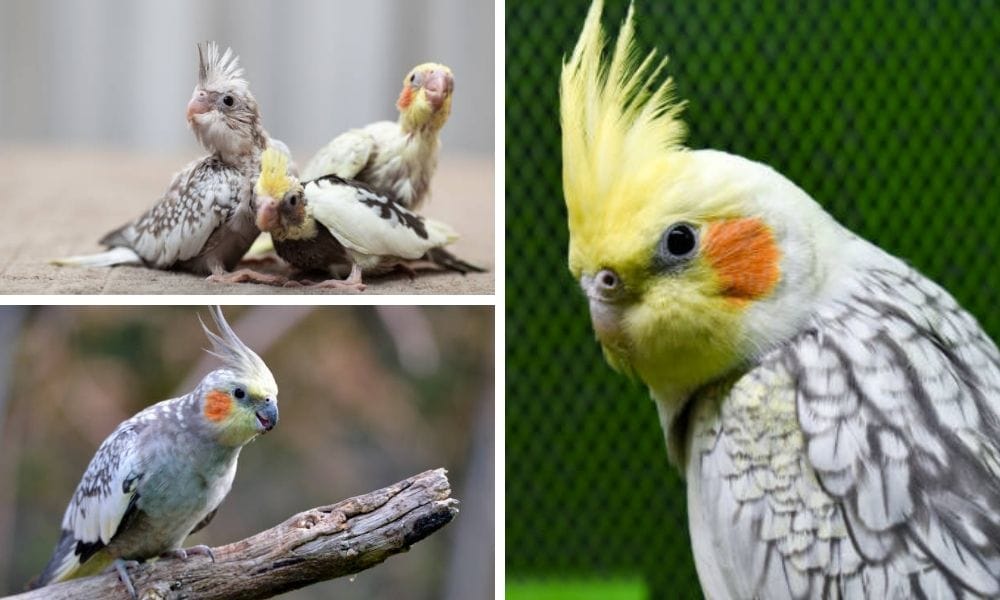
Introduction to Pearl Cockatiels
Pearl cockatiels are a stunning example of how a color mutation can transform the appearance of a beloved pet bird. Unlike the standard grey cockatiel, pearl cockatiels display a unique pattern of scalloped markings across their feathers, often highlighted by shades of yellow, white, and cinnamon. This beautiful coloration makes them a favorite subject in cockatiel bird photography and a top choice for bird owners seeking something truly unique. Beyond their eye-catching looks, pearl cockatiels are known for their affectionate and gentle personalities, making them a wonderful companion for both new and experienced bird enthusiasts. Whether you’re drawn to their vibrant colors or their sweet nature, pearl cockatiels are a delightful addition to any home.
Key Takeaways:
- Understand the basics of pearl cockatiel genetics and breeding requirements.
- Learn how to identify and care for pearl cockatiels, including diet and habitat needs.
- Gain insights into the common health issues and how to prevent them in pearl cockatiels.
Pearl cockatiels, with their intricate patterns and docile personalities, are a favorite among pet bird enthusiasts. If you're looking to add a pearly tiel to your family or are interested in breeding these beautiful birds, this comprehensive guide will walk you through the process step by step.
Understanding Pearl Cockatiels
Pearl cockatiels, also known as laced cockatiels or opaline cockatiels, are part of the cockatoo family and are known for their distinctive light blue-gray feathers and patterns. The ‘pearl’ in their name refers to the speckled, pearl-like pattern on their back, wings, and tail feathers. Unlike the wild type cockatiel, which has a natural grey coloration with white flashes, pearl cockatiels display unique markings. The pearl cockatiel mutation first appeared in Germany in the 1940s, marking the beginning of this popular variety. This color mutation was initially discovered in captive cockatiels and has since become a sought-after variety.
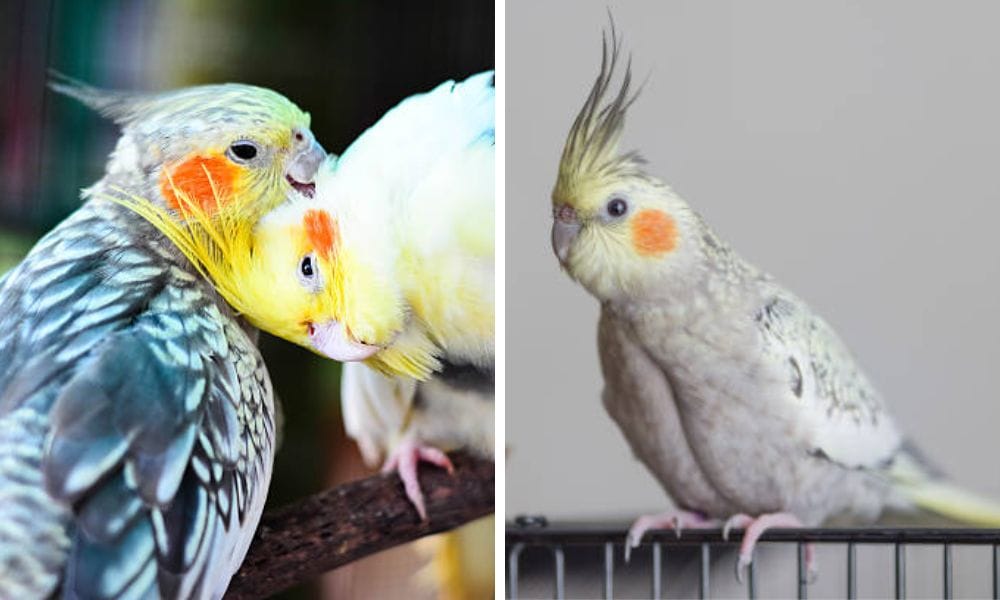
Identifying Pearl Cockatiels
Most pearl cockatiels exhibit a mix of grey feathers with yellowish infusion and white wing bars. Males and females can be distinguished by their facial markings and the coloration on their heads: males lose the pearl patterning after their first molt, leading to a primarily grey body with a yellow face and orange cheek patches, while females retain more muted head coloration and their pearly patterns throughout their lives. One key difference is that males may puff out their chest or display brighter chest coloration during social or mating displays. The underside of the tail feathers in females often shows distinct barring or spots, which can help with identification. The differences between male and female pearl cockatiels are most apparent before the first molt, but after this stage, it becomes challenging to differentiate the sexes visually, as males lose their pearling and look similar to standard greys. While much of the identification relies on visual cues, you may also hear tips or subtle differences from experienced breeders that can help distinguish between mutation types. While these visual cues can help, it is not always possible to differentiate the sexes visually, especially in certain mutations, and alternative methods may be needed for accurate sex identification.
The Genetics Behind Pearl Cockatiels
Pearl cockatiels are the result of a sex-related genetic mutation. This means that the gene responsible for the pearl pattern is located on the sex chromosomes. Some cockatiels can carry the pearl gene without displaying the pearl pattern themselves, and these carriers can pass the gene to their offspring. Unlike dominant mutations, such as the dominant silver mutation, the pearl mutation is not dominant and follows a different inheritance pattern. Breeding pearl cockatiels requires an understanding of these genetics to predict the appearance of the offspring. For example, male pearl cockatiels can pass the gene to their daughters, but not their sons, while females can pass it to both. The genetics of pearl cockatiels also differ from those of the pied cockatiel, which is known for its distinctive blotched or mottled coloration due to a separate mutation.
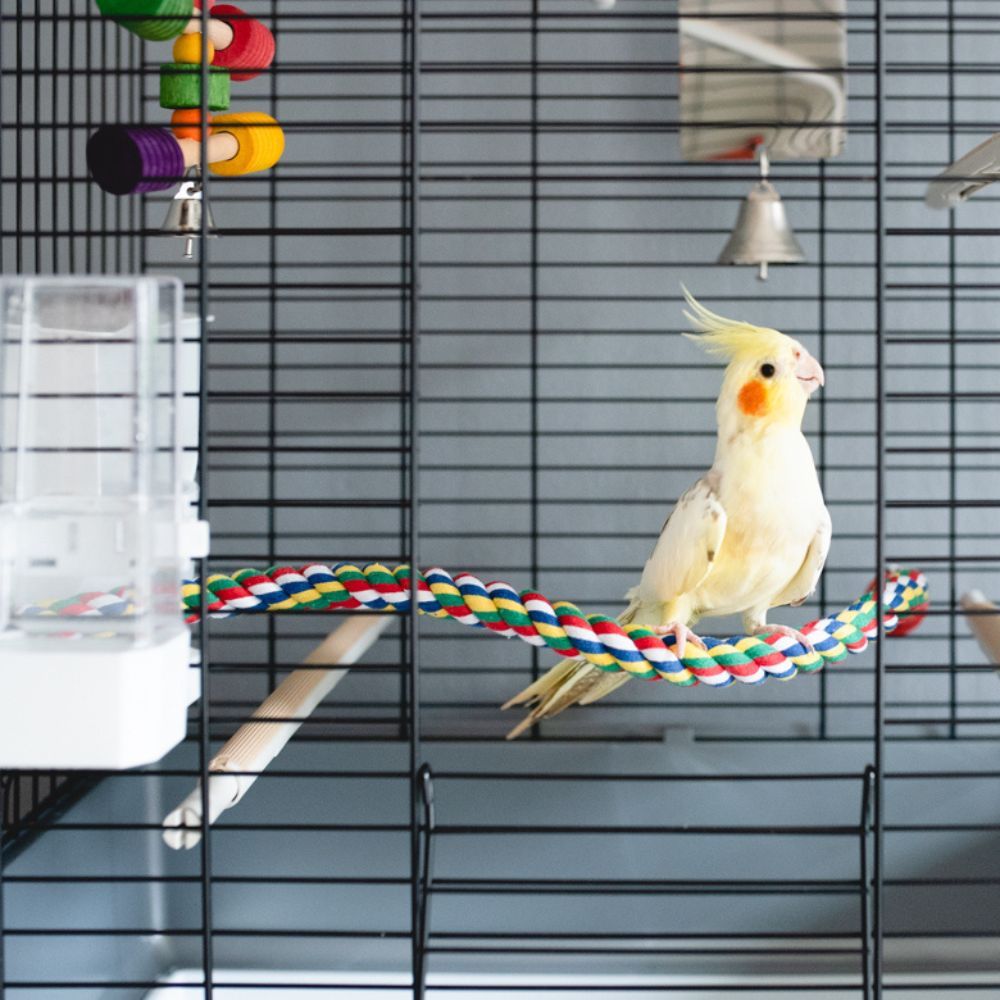
Setting Up the Breeding Environment
To breed pearl cockatiels, you'll need a comfortable and safe environment. A spacious flying cage is essential, as these birds need room to stretch their wings slightly. The cage should be equipped with nesting boxes, perches, and toys to stimulate the birds. It's also important to maintain a consistent temperature and avoid exposure to pesticide residue or other toxins.
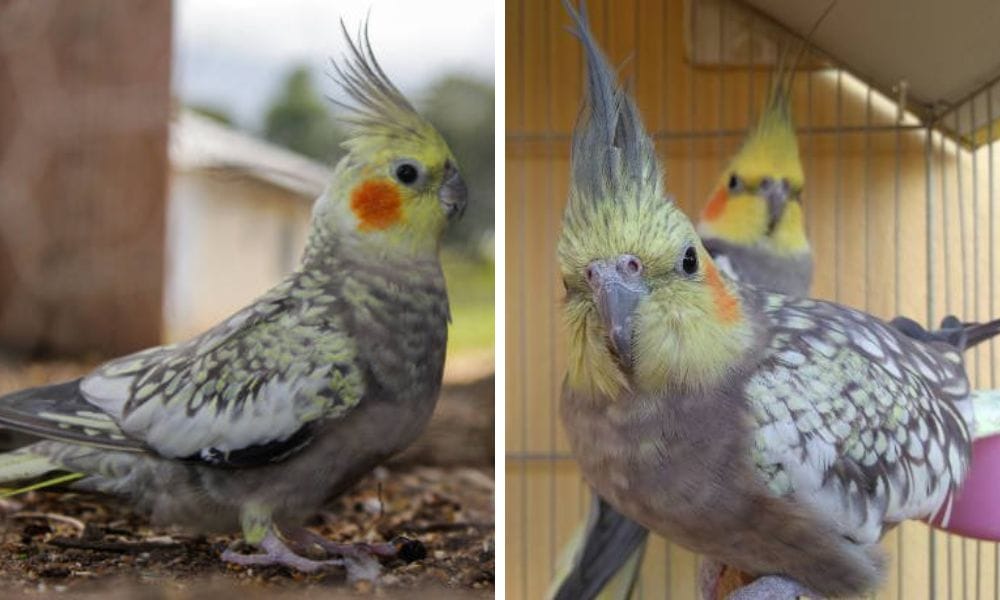
Choosing the Right Pair
When selecting a pair for breeding, look for birds with clear signs of good health, such as bright eyes, clean nasal discharge, and full, vibrant tail feathers. It's best to choose birds from specific breeders who can provide a history of the birds' health and genetics. Many breeders will have records of their birds' lineage, which can help you predict the color mutations of the offspring.
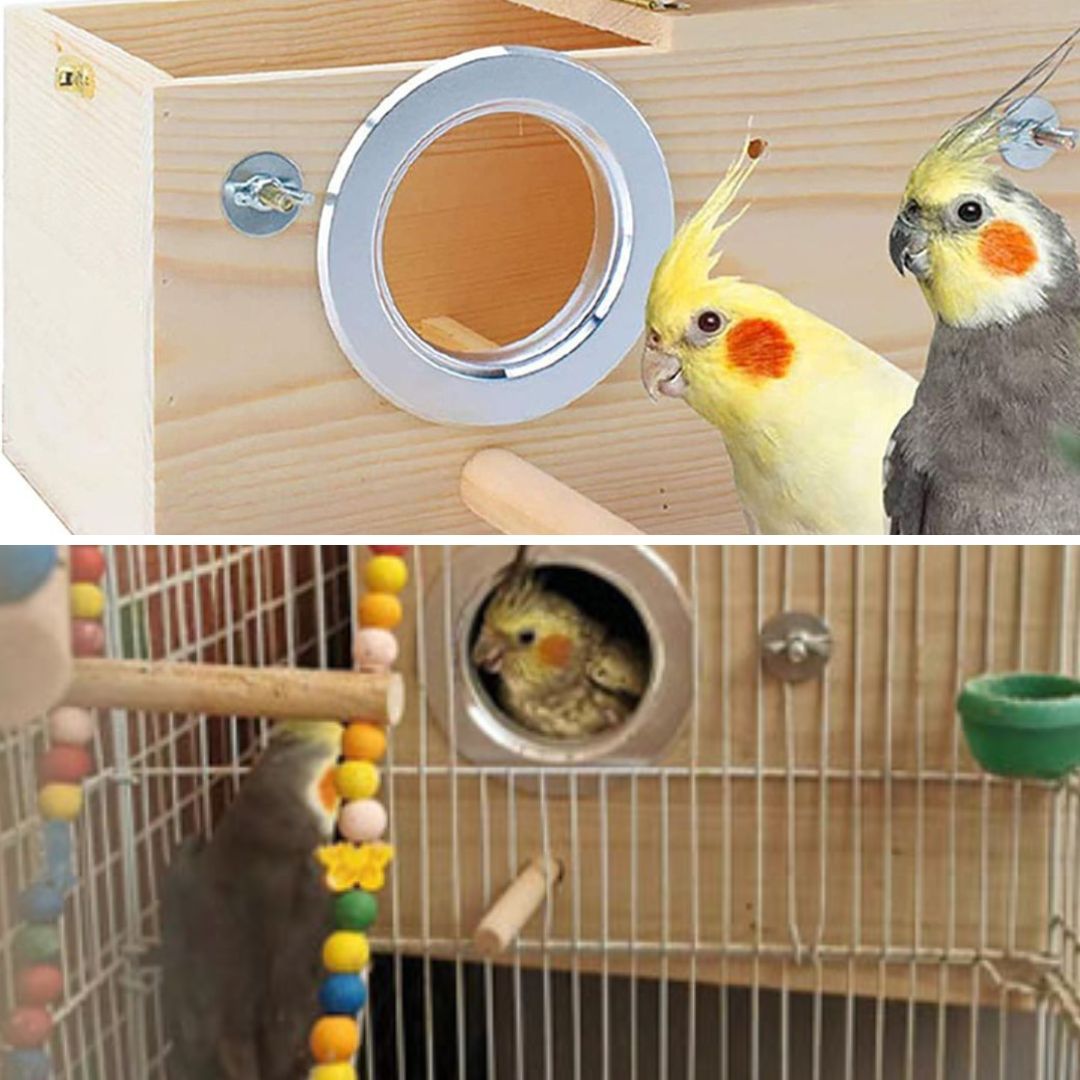
The Breeding Process
Once you've chosen a healthy pair, introduce them to each other and observe their interactions over time. Cockatiels form strong bonds and may take some time to warm up to a new mate. The female will lay eggs after a successful mating, and both parents typically share the responsibility of incubating the eggs.
Caring for Breeding Cockatiels
For bird breeders, providing the right care for breeding cockatiels is essential to ensure healthy, happy birds and successful breeding outcomes. A spacious aviary is crucial, giving your cockatiels plenty of room to fly, exercise, and display natural behaviors. Nutrition plays a key role—offer a balanced diet rich in fruits, vegetables, and high-quality pellets to support their overall health and breeding success. Cleanliness is equally important; a well-maintained environment helps prevent the spread of disease and reduces stress for your birds. Regular veterinary check-ups are a must, as breeding cockatiels can be more susceptible to health issues like respiratory infections and nutritional deficiencies. By prioritizing space, nutrition, and proactive health care, bird breeders can provide the essential support their cockatiels need to thrive and produce vibrant, healthy chicks.
Caring for Young Cockatiels
After the eggs hatch, the young birds will need a diet rich in nutrients to support their growth. Young cockatiels should be fed a mixture of seeds, pellets, and fresh fruits and vegetables. It's important to monitor the chicks for signs of fatty liver disease or other health issues common in young birds.

Health Concerns in Pearl Cockatiels
Pearl cockatiels, like many birds, can suffer from a range of health issues. Common problems include respiratory infections, indicated by red eyes or nasal discharge, and fatty liver disease, which can be prevented with a proper diet. Regular check-ups with an avian vet can help catch and treat these issues early.
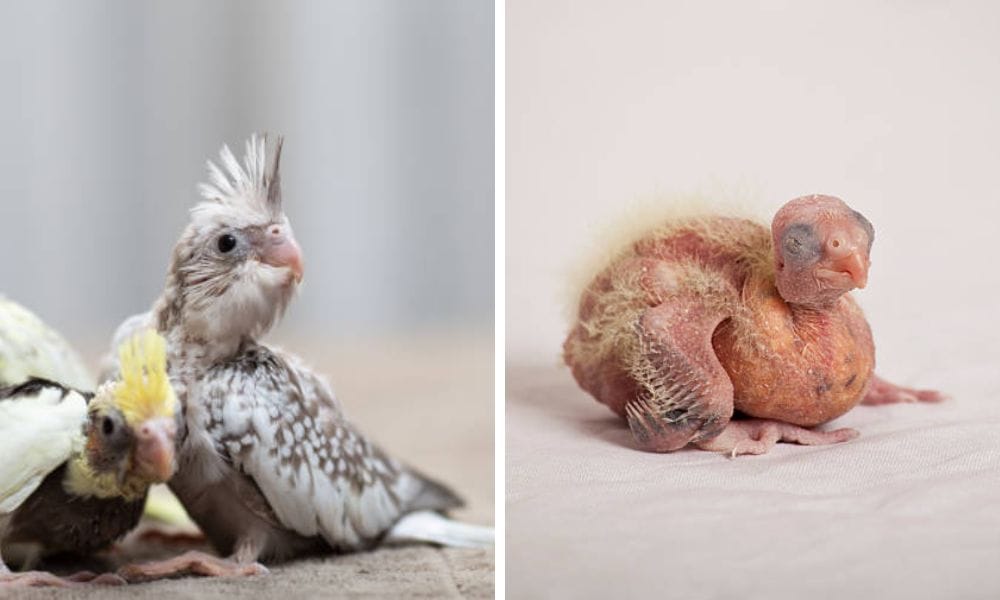
Preventing Bad Habits
Cockatiels can develop bad habits such as excessive screaming, which can serve as their alarm clocks, or feather plucking. To prevent these behaviors, ensure your birds have plenty of mental stimulation and social interaction. Providing company, either from humans or other birds, is important to prevent boredom and behavioral problems. A varied environment with toys, foraging opportunities, and regular human contact can help keep your cockatiels happy and healthy.
Decoding Cockatiel Color Variations
When embarking on the journey of breeding pearl cockatiels, understanding the spectrum of color variations is crucial. Light blue gray feathers often characterize the elegant white faced cockatiels, a mutation that lacks the orange cheek patch typically found in their wild counterparts. These birds present a striking contrast to the yellow white bird palette seen in lutino cockatiels, which are often referred to as a yellow cockatiel due to their solid yellow plumage, bright yellow head, and red eyes. Some colorations, such as cinnamon and light grey, can be mistaken for each other because of their similar appearance, though subtle differences in tone and overtone set them apart. The first cockatiel mutation recorded was the light pied, a pattern that introduced a mix of colored and white feathers, leading to a beautiful mosaic appearance. In certain mutations like the Olive cockatiel, the outer edges of each feather are darker, creating a scalloped or outlined look that adds to the bird’s distinctive pattern.
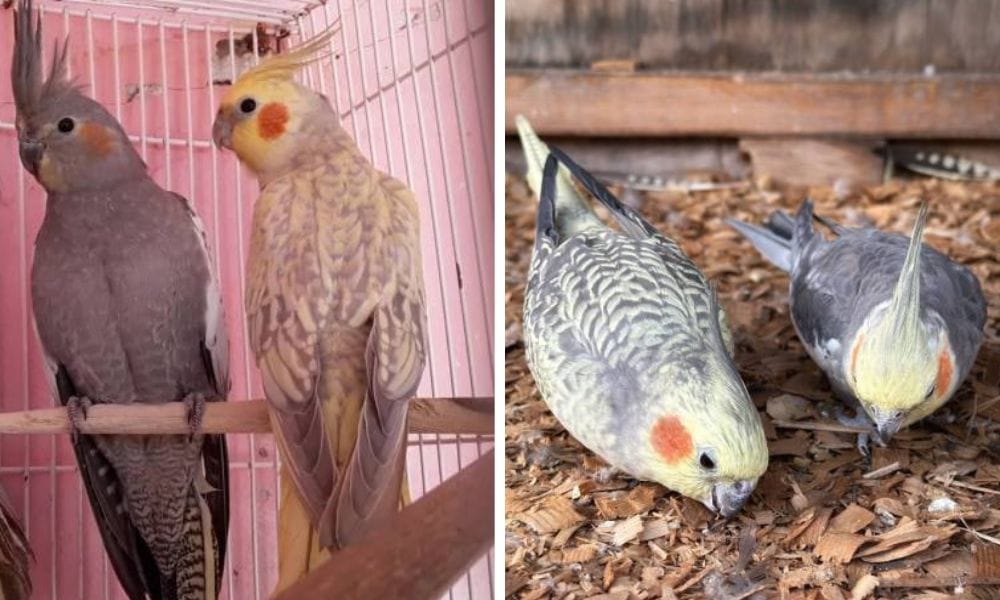
Now, let's talk about the unique feather patterns that set pearly cockatiels apart from other mutations. In the realm of pearly cockatiels, also known as pearly tiels, the feathers are adorned with a delicate pattern of horizontal bars or colored bars that give them a unique, textured look. This pattern is especially prominent in pied whiteface and pearly whiteface varieties, where the absence of yellow and orange pigments emphasizes the intricate pearl markings. The yellow crest and warm tans of some pearly tiels add to the diversity, creating a captivating array of colors that can be selectively bred for. Each description cockatiels receive is a testament to their diverse beauty, with image credit often given to the breeders who have nurtured these stunning variations. Wild Cockatiels: The Ancestors of Pearl Tiels Wild cockatiels are the untamed counterparts of the beloved pearl tiels, and understanding their behavior can provide valuable insights into the care and breeding of domesticated cockatiels. Originating from the arid regions of Australia, wild cockatiels have adapted to a life of foraging for food and water, which has honed their survival instincts. In the wild, cockatiels spend much of their time foraging or socializing with their flock, which is essential for their physical and mental well-being. Observing these birds in their natural habitat can be a fascinating experience, as their social structures and interactions are complex and indicative of their innate intelligence.
In the observed time spent with wild cockatiels, researchers have noted their strong flock mentality and the pivotal role it plays in their survival. These observations have led to better practices in breeding and keeping pearl tiels, as breeders strive to replicate the social environment that is so crucial to the well-being of these birds. By mimicking the flock dynamics, breeders can encourage natural behaviors in pearl tiels, leading to healthier and more sociable pets.
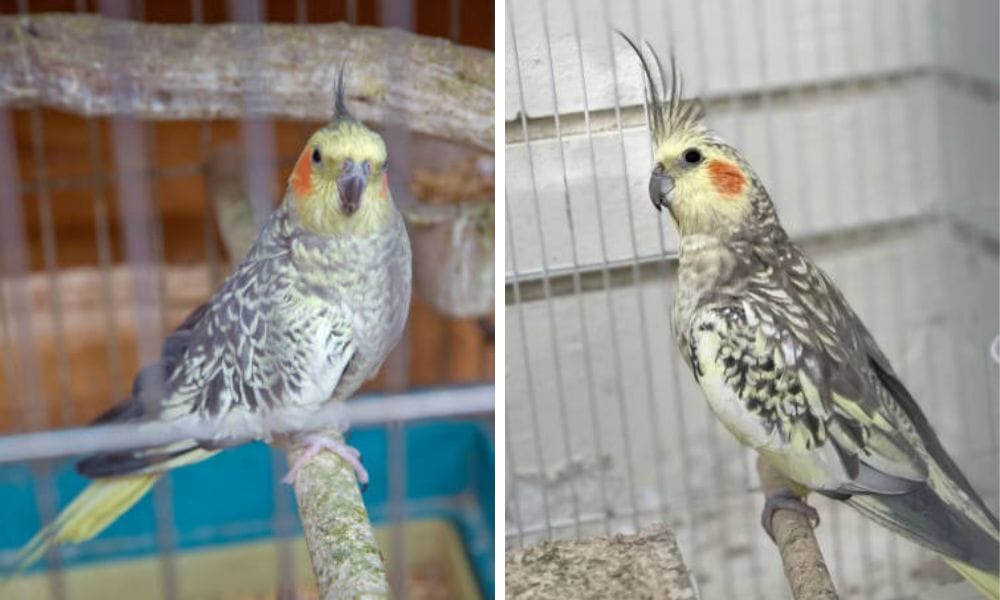
The Observed Time in Pearl Cockatiel Development The observed time in a pearl cockatiel’s development is a critical phase that breeders and enthusiasts closely monitor. From hatching to fledging, each stage of growth offers unique insights into the health and future potential of the bird. During the first few weeks, pearl tiels exhibit rapid growth, and their diet, as well as the care they receive from their parents, plays a significant role in their development. Breeders must ensure that the chicks are gaining weight and feathering properly, as these are indicators of good health.
As the chicks grow, the observed time becomes even more crucial. Breeders watch for the emergence of the pearl pattern, which typically becomes visible after the first molt. This is a thrilling moment for breeders, as it confirms the successful passing on of the desired traits. It’s also the period when socialization and initial training begin, setting the foundation for the bird’s temperament and behavior. Observing these developmental milestones helps breeders and owners alike to understand and cater to the needs of their pearl tiels.
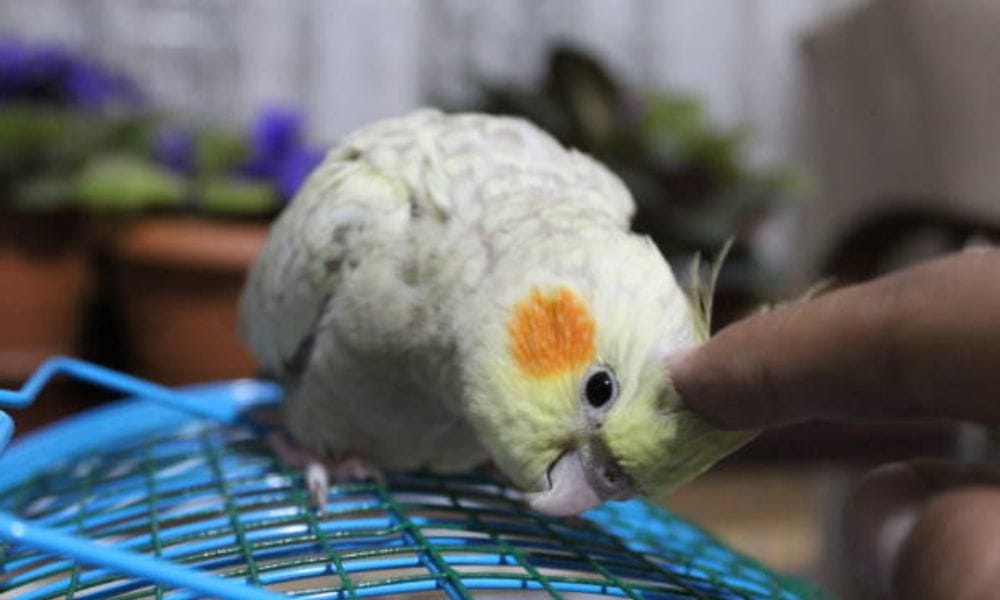
Understanding Sex-Linked Traits in Cockatiels
Breeding pearl cockatiels involves a deep dive into genetics, particularly when dealing with sex related genetic mutation. For instance, the pearl pattern is a sex-linked trait, meaning it is associated with the sex chromosomes. Females can display the pearl pattern regardless of their other genes, while males can lose the pattern as they mature, often resulting in a gray body with only traces of their juvenile pearling. This genetic quirk makes sexing pearl cockatiels a unique challenge, as wider pelvic bones in females are not always a definitive indicator.
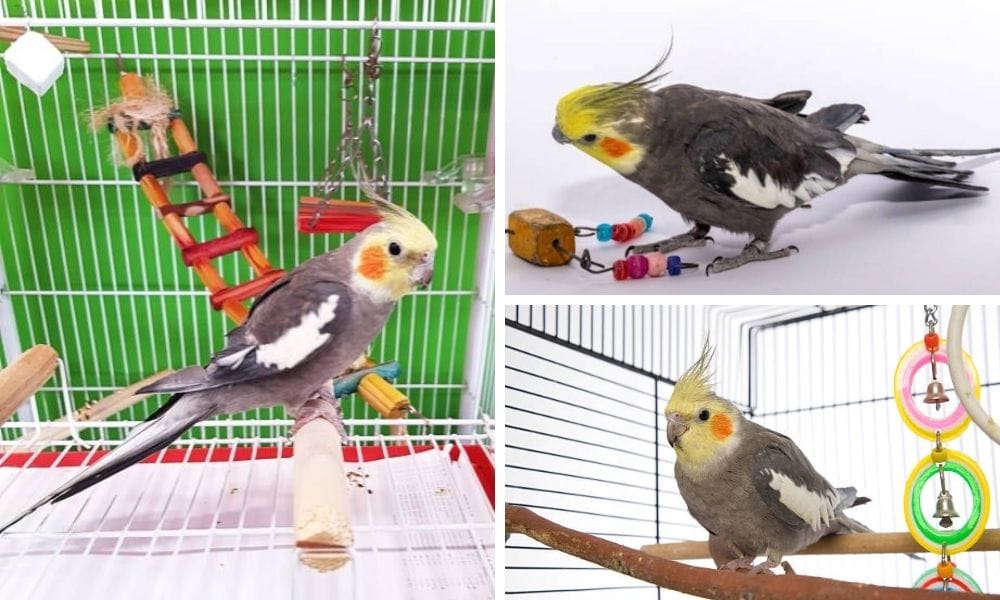
The genetics of yellow faces and clear pied patterns are also fascinating, as these traits can combine with the pearl mutation to create pearly tiels with a predominantly white appearance. Breeders must understand these genetic intricacies to predict the outcomes of their pairings. For example, a pairing between a white faced cockatiel and a pearl tiel could yield offspring with a mix of the parents' traits, including the possibility of sex linked pearl patterns. As breeders observe these traits over time, they contribute to the collective knowledge of parrots genetics, helping to refine breeding strategies for future generations.
The Molting Process
Pearl cockatiels go through a juvenile molt, during which young males may lose their pearl patterning and develop the typical grey colors and yellowish face of adult males. This process can be stressful for the birds, so it's important to provide extra nutrition and a calm environment during this time.
Recognizing a True Pearl Cockatiel
True pearl cockatiels have a specific pattern of scalloped feathers, often described as golden pearls or silver pearls, depending on their color pigment. These patterns are most prominent on the back and wings and can vary in intensity among individual birds.
Breeding for Specific Traits
Some breeders aim to produce birds with specific traits, such as the cinnamon pied pearly, which combines the pearl pattern with a cinnamon brown color, or the white-faced cockatiels, which lack the yellow pigmentation typical of most pearl cockatiels. Breeding for these traits requires careful selection of parent birds and an understanding of the genetics involved.
The Importance of a Balanced Diet
A balanced diet is crucial for the health of pearl cockatiels. The transformation from wild to domesticated cockatiels has changed their dietary needs, making it important to provide a diet that meets their specific nutritional requirements. It should include foods with variety of seeds, pellets, and fresh produce to provide the necessary vitamins and minerals. Avoid foods high in fat, as cockatiels are prone to fatty liver disease, and ensure they have access to clean water at all times.
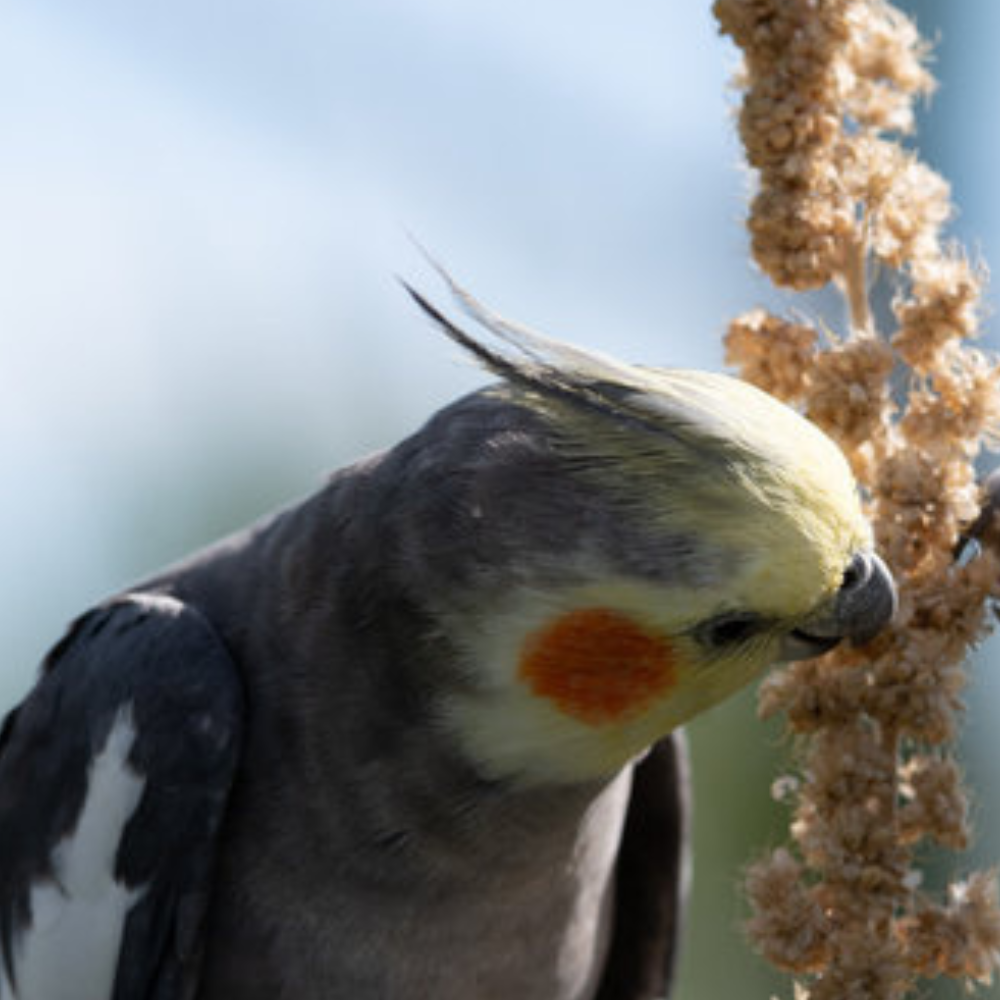
Socialization and Training
Pearl cockatiels are known for their docile personalities, making them excellent pets. Socialization from a young age is important to prevent fearfulness and encourage bonding with human caretakers. During training or social interactions, male cockatiels may stick their chest out and strut, displaying confidence and trying to attract attention. Training sessions can also be a fun way to interact with your birds and teach them simple tricks or commands.
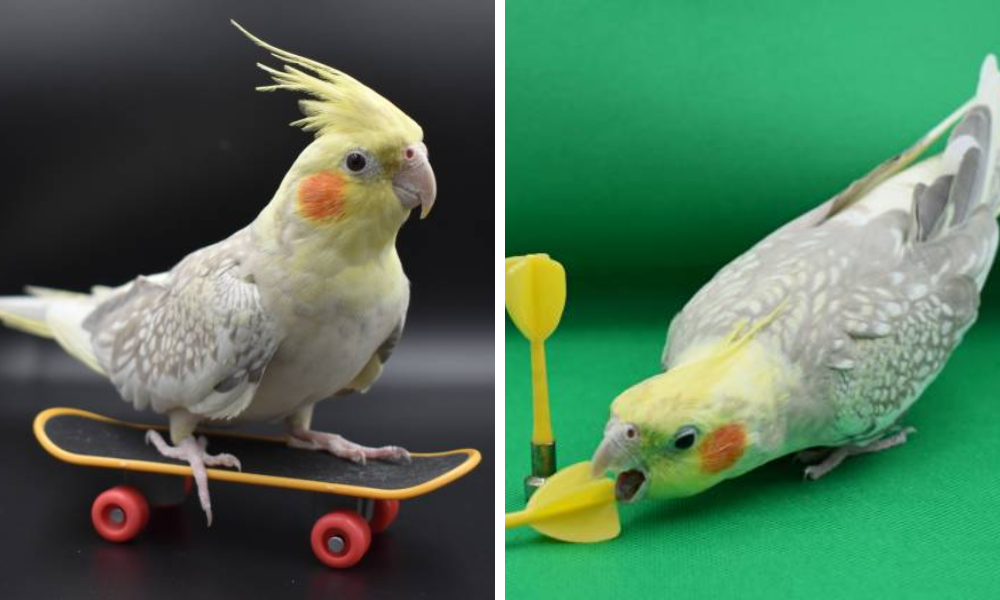
Understanding Breeding Cycles
Cockatiels have specific breeding cycles, and understanding these can help you plan for successful breeding. Many breeders observe the birds' behavior and provide nesting materials when the birds show signs of readiness to mate. It's also important to give the birds a rest period between breeding cycles to maintain their health.
Dealing with Common Breeding Challenges
Breeding pearl cockatiels can come with challenges, such as infertility or egg binding. These issues can often be addressed with changes to diet, environment, or by consulting with an avian veterinarian. Experienced breeders can also provide advice on how to overcome these hurdles.
The Role of Avian Veterinarians
Regular check-ups with an avian veterinarian are essential for breeding pearl cockatiels. These specialists can provide valuable insights into the health and genetics of your birds, as well as offer treatment for any issues that arise. They can also guide you on proper care and nutrition for your breeding pair and their offspring.
Joining Breeder Communities
Joining communities of cockatiel breeders can be a valuable resource for beginners. These groups often share tips, experiences, and advice on breeding pearl cockatiels. Breeder communities frequently share information and images on various sites, making it easier to access a wide range of resources and connect with others. Having a dedicated page to organize and present information about cockatiel mutations, including images and details, can also be extremely useful. They can also be a source of support and camaraderie as you navigate the challenges and joys of breeding these beautiful birds.
Ethical Breeding Practices
It's important to adhere to ethical breeding practices when working with pearl cockatiels. This includes providing adequate space, nutrition, and care for the birds, as well as avoiding inbreeding or overbreeding. Responsible breeders prioritize the well-being of their birds above all else.
Acquiring a Pearl Cockatiel
Bringing a pearl cockatiel into your life is an exciting step for any bird lover. These birds are admired for their stunning colors and affectionate personalities, making them a standout choice among pet birds. When searching for your new companion, it’s essential to connect with a reputable breeder who is committed to the health and ethical treatment of their cockatiels. Take the time to research breeders, ask for references, and visit their facilities if possible to ensure you’re getting a well-cared-for bird. Consider the price of a pearl cockatiel, which can vary depending on coloration, lineage, and breeder reputation, as well as the ongoing costs of food, toys, and veterinary care. By making an informed decision and choosing a trustworthy source, you’ll be rewarded with a beautiful, affectionate bird that will bring color and joy to your home for years to come.
Summary
Breeding pearl cockatiels can be a rewarding experience for bird owners. By understanding the genetics, providing a suitable environment, and caring for the health of your birds, you can successfully breed these stunning pet birds. Remember to consult with specific breeders and avian veterinarians to ensure the best outcomes for your feathered friends.
FAQ Section
Q: How can I tell if my cockatiel is a pearl variety? A: Pearl cockatiels have a distinctive pattern of scalloped feathers, often with a yellowish infusion and white wing bars. Males typically lose this patterning after their first molt, while females retain it throughout their lives.
Q: What should I feed my pearl cockatiel? A: A balanced diet for a pearl cockatiel should include a mix of seeds, pellets, and fresh fruits and vegetables. Avoid high-fat foods and ensure they have access to clean water at all times.
Q: How often should I take my pearl cockatiel to the vet? A: Regular check-ups with an avian veterinarian are recommended, at least once a year or more frequently if you notice any signs of illness or if you are actively breeding your cockatiels.

